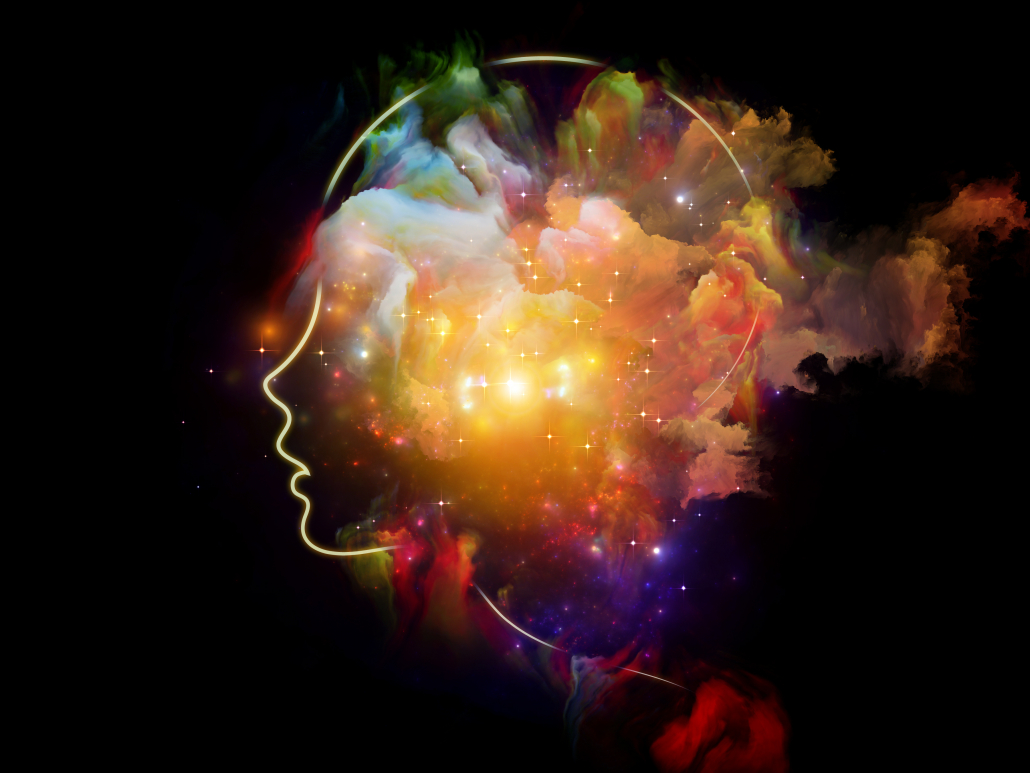We include products in articles we think are useful for our readers. If you buy products or services through links on our website, we may earn a small commission.
Visualization Techniques: A Guide to Unlocking Your Potential

Table of Contents
Visualization techniques have been used for millennia to achieve life goals, big and small. They work by intentionally bringing events, people, and objects into consciousness with intense focus.
To some, the idea of using your imagination to create real-life outcomes may sound a bit hocus pocus. But visualization techniques are founded on proven principles of psychology and neuroplasticity.
Using visualization to simulate your goals works by:
- activating the creative potential of your subconscious, yielding creative ideas for achieving your goals.
- programming your brain to recognize the resources you need, and the order you need them in to achieve your goals.
- building the motivation you need to follow through with the resources that you have.
Practicing visualization techniques can be as simple as sitting comfortably, closing your eyes. From the perspective of being you, looking out, and–in as vivid detail as possible–imagine the entire process leading up to your goal. Then visualize what it looks like to have already achieved your goal.
Famous Examples of the Power of Visualization Techniques
Though they’re not magical spells to fulfill your every desire, visualization techniques have been practiced for millenia, and their effects are gaining scientific and popular attention.
Visualization techniques are used by countless athletes including Lebron James, the late Kobe Bryant, and Carli Lloyd.
Oprah has famously repeated “visualization works!”, while showcasing the power of positive thinking on her show.
In the early ’90s, before actor Jim Carey made it big, he wrote himself a $10 million check for “acting services rendered” post-dated for 1994. For years he carried the check in his wallet for daily motivation. Then in 1994, he landed his role in Dumb and Dumber, earning exactly $10 million for his services.
Speaking to the power of visualization techniques, actor Will Smith said, “In my mind, I’ve always been an A-list Hollywood superstar. Y’all just didn’t know yet.” As motivation Smith often quotes Confucius’s motto, “He who says he can and he who says he can’t are both usually right.”
Origins of Visualization Techniques
Visualization techniques have likely been around for millennia. They’re often linked to the idea of the “mind’s eye” developed by The Roman statesman Cicero. Cicero’s idea describes the ability of the mind to focus and change internal images.
Visualization techniques have also been a core practice in Buddhism for over 2000 years. Maybe you’ve heard Loving Kindness Meditation. This type of visualization technique is a key part of the popular mindfulness movement.
In the late 1970s, New Age author Shakti Gawain wrote a manual for the use of visualization techniques for personal growth. It’s been a best seller for over 40 years.
Visualization techniques reached popular culture during the 1980s when Russia began using them to improve their performance in sports following the 1984 Olympics.
What is Visualization?
Meditation is all about focusing your attention in a calm, controlled way. Visualization techniques build on that to form a picture (or sometimes even ‘video’) in your mind that represents a situation or goal.
You may have heard of visualization as ‘manifestation”, “the secret”, or “the law of attraction,”
Though there’s some truth to the claims made from these various interpretations of visualization techniques, as we said earlier, they’re not magic spells.
Visualization is a process of intentionally changing how you think, feel, and approach different situations in your life. As with anything, practice makes perfect, and it takes time.
The Psychology of Visualization Techniques
Whether or not you’re aware of it, your brain is always using visualization techniques. This is the brain’s way of simulating future experiences. We do this instinctively as a way to prepare ourselves.
By becoming aware of this process, you can participate in your future simulations. You can learn to use visualization to actively create future simulations that can help you improve the goals that you set for yourself.
The Science of Visualization
Visualization takes advantage of specific neurological functions hardwired in the human brain.
Neuroplasticity
Visualization techniques take advantage of the brain’s ability to change. This is called neuroplasticity.
“Plasticity” in this case means, “easily shaped or molded.” When applied to your brain, plasticity refers to how you can create new pathways of neurons and neural networks based on new information, and sensory stimulation. This new information and stimulation doesn’t have to be experienced in external reality, but can actually be imagined.
There is very little neurological difference between what you visualize in your mind’s eye, and what you see outside of yourself in the world. Likewise, your thoughts produce the same mental instructions as actions. The effects are psychological, emotional, and physical.
In fact, most of the research done on visualization looks at the physical effects of visualization. The reason being that it’s much easier to measure physical outcomes than mental and emotional outcomes. But this doesn’t mean that the effects are restricted to the body.
In this study from the Cleveland Clinic Foundation in Ohio, normal people were split into two groups. One group did physical exercises, the other group only visualized the workouts in their minds. The physical exercise group showed a 53% increase in finger abduction strength. While the visualization group showed an initial 35% increase, and then a 40% increase four weeks after training had ended.
This study shows both the immediate and continually accruing effects of visualization practices.
Neural Pathways
Since the brain doesn’t distinguish between real and imagined, visualization cactivates neural pathways corresponding to what the brain thinks is actually happening. When these pathways have been reinforced the brain follows them in instances when corresponding real events occur.
This approach to deep neurological change is supported by research that reveals how running through scenarios in your head can be almost as effective as living the actual scenario.
Neuroscientist Stephen Kosslyn, Ph.D., author of Top Brain, Bottom Brain, explains that ‘visualization activates the same neural networks that actual task performance does, which can strengthen the connection between brain and body.’
Activating the Motor Cortex
When people like Kobe Bryant use visualization techniques for athletic performance, they are activating mirror neurons and priming the pump, so to speak, for the actual moment.
Speaking to the effectiveness of visualizations with regards to physical activities, Srini Pillay, Professor of psychiatry at Harvard Medical School writes, “Imagining allows us to remember and mentally rehearse our intended movements. In fact, visualizing movement changes how our brain networks are organized, creating more connections among different regions. It stimulates brain regions involved in rehearsal of movement, such as the putamen located in the forebrain, priming the brain and body for action so that we move more effectively. Even picturing others in motion warms up the “action brain” and helps us figure out what we want to do and how we can coordinate our actions with those around us. Over time the brain learns our routine movements, allowing these actions to become more automatic and fine-tuned.”
A study looking at the use of positive visualization for strength training found that participants could life 10-15 more lbs than a control group.
The RAS
The reticular activating system is the name for the filters in the brain that sort out the important from extraneous information. The RAS protects us from overload and focuses our attention.
Visualization techniques prime the brain to focus on certain stimuli. If you’ve ever spent time searching for a specific model of car and then all of a sudden see it everywhere around town, this is because you RAS was primed to look for it. If it’s the effective for identifying vehicles, imagine how this function could be put to use for the benefit of your relationships, artistic endeavours, and career goals. Focus on what you want, what you enjoy, and you are more likely to encounter it in the world. Not necessarily because you manifested it our of thin air, but because you trained your mind to identify it when it comes across your perceptive field.
Placebo
The placebo effect is a principle that considers how the context surrounding medical treatment can have significant and consistent impacts on physiological outcomes.
From a neurological perspective, these effects include reduced activity in brain areas associated with pain and negative emotion and increased activity in various other parts of the brain corresponding with emotional and nervous system regulation.
In this study patients who visualize their immune systems working showed higher T-cell and active ‘killer cell’ counts than a control group.
Benefits of Visualization Techniques
Some of the many benefits associated with visualization techniques include:
- enhanced athletic ability
- better accuracy
- decreased mental distress
- treatment of cancer including pain, quality of life, and other side effects
- lower anxiety
- improvement in sleep
- stress reduction
- reduction in pain
- improved concentration
- improvement in self-confidence and body image
- increased levels of self-compassion
- decrease side effects and complications of medical procedures
- alleviation of depression symptoms
- weight loss
- stopping smoking
- Help people make decisions
9 Visualization Techniques
The following techniques will help you deepen and strengthen your visualization practice.
1. Visualize the Outcome and the Process
When it comes to using visualization techniques to help achieve your goals, there are 2 main areas to focus on:
- Outcome: visualizing the final outcome you desire
- Process: visualizing the step-by-step process that will get you to your outcome
To get the greatest benefit from your visualization techniques, use both together.
2. Be the Participant, not the Observer
Research shows that visualization techniques are more effective when you take the perspective of the participant rather than the observers.
Instead of seeing yourself in the simulation, see what’s going on as if looking through your own eyes.
3. Use all of your senses
For successful visualization, try to engage all of your senses. Another visualization technique involves not just stopping at building a picture in your mind’s eye – instead, build a world.
- Can you hear bird songs or vehicles?
- Can you smell anything in the air?
- Are you eating anything, or chewing gum?
- Can you feel the clothes you’re wearing? Or the ground beneath your feet?
Envision what you can smell, feel, taste, and hear, as well as what you can see.
4. Be SMART
SMART is an acronym coined back in 1981 by George T. Doran, as a way of making sure that you have a higher chance of achieving your goals.
- Specific: make sure that you choose a specific area or goal that you want to improve
- Measurable: how will you know when you’ve attained this goal?
- Assignable: specify who will do the thing, or who will help you achieve your goal
- Realistic: decide what results can realistically be achieved given available resources – maybe you’ll need to have an interim goal?
- Time-related: specify when the result can be achieved
5. Be non-judgmental
An important visualization technique is to be non-judgmental. That means no beating yourself up for losing focus or not getting it right the first time. Some people like to visualize their judgments as floating away on leaves down a stream. This includes any distractions that may come into your head as you’re trying to visualize your success. Simply observe the distraction and move on from it, bringing your attention back to your visualization exercise.
6. Colors
Not all visualization techniques are about simulating goals. Others, like color visualization, are aimed at reducing stress and anxiety in the present moment.
An easy visualization technique to start with is color meditation or color breathing. Studies show that different colors evoke different emotions in people.
- Choose a color that represents positive emotions for you. There is no right or wrong answer here.
- Visualize that color and inhale deeply, picturing a wave of the color washing over your body.
- Continue taking deep long breaths in and out while visualizing the color completely filling your body, and taking the place of negative emotions.
7. Progressive Muscle Relaxation
Like color visualization, progressive muscle relaxation is aimed at changing the hear and now.
This visualization technique uses subtle movements to help tackle tension in the mind and body, enabling you to relax, calm your mind, and even sleep better.
- Begin by lying or sitting comfortably in a room without distractions.
- Close your eyes and take several deep breaths.
- Starting at either your head or toes, work your way through every single muscle in your body, tensing and then relaxing each muscle.
- Feel the warmth and heaviness that comes with the relaxing of each group of muscles.
- After you’ve done every muscle group, spend a few minutes relaxing quietly before carrying on with your day.
8. Compassion Meditation
Another type of visualization that doesn’t focus on goals is, Loving Kindness or “metta”. This practice is about cultivating compassion for you and others.
- Begin by holding the image of another person in your mind (start with someone for who you feel unconditional love).
- Silently recite the phrase, “May you be safe, happy, and healthy.”
- Visualize a beam of warm blue light traveling from your body to theirs, carrying these wishes to them.
- Hold that person in your mind with a feeling of appreciation, compassion, or generosity.
- Once you find a rhythm, move on to other people, even people you might find it difficult to feel compassion for.
- You can also just visualize sending these kind wishes and light to yourself.
9. Create a vision board
Another visualization technique to help bring your ideas to life is to create a vision board. Having a physical reminder of your goals means that you’re more likely to be motivated to take action to achieve them. It can also help with your mental visualization exercises.
Common Mistakes
Visualization techniques are usually pretty simple for anyone to carry out, but there are a few easy mistakes that can derail your visualization success.
Poor posture
Sitting uncomfortably can cause you to become distracted. The idea behind visualization techniques is to relax and concentrate on what you’re doing.
Noisy environment
Trying to use visualization techniques when surrounded by noise and distractions is a surefire way to set yourself up for frustration. Although they can be used almost anywhere, to get all the benefits of visualization techniques, make sure that you’re in a quiet room where you won’t be disturbed.
Giving up too quickly
While some people find visualization techniques to be second nature, for others it can require some stick-to-it-ivness. If this is your first experience using a meditation technique, start with the 3×10 plan. 3 times a week for ten minutes each session. Missing a day or two won’t make you beat yourself up, and it’s just enough to get the momentum going.
Jumping ahead
If you’re finding it difficult to visualize effectively, you might be jumping too far ahead. Say you’re trying to visualize a new job – maybe you’re visualizing all the money you’re going to be making? Start smaller. Visualize yourself nailing an interview. Then visualize yourself accomplishing your tasks with competence and confidence.
Daydreaming
There is a difference between daydreaming and visualization exercises. Daydreaming lacks intent. Daydreaming is defined as ‘spontaneous, subjective experiences in a no-task, no
stimulus, no-response situation, [and] includes unintended thoughts that intrude inadvertently into the execution of intended mental tasks.’
Visualization may be similar to daydreaming in some ways, but it has to have intent. Visualization techniques help you to be a more active and intentional participant in the unfolding of your life.
The Outlook on Visualization Techniques
Visualization techniques use the power of your mind to achieve your immediate and future goals.
Though visualization techniques have been practiced for millennia, they are gaining new popularity. They’re used by countless professional athletes and are being further developed for use in therapeutic settings.
Research has shown that visualization techniques can be helpful in numerous scenarios like reducing pain, increasing performance, and increasing self-confidence and body image.
There are many visualization techniques to choose from, and the few risks, if any, are very low.





















